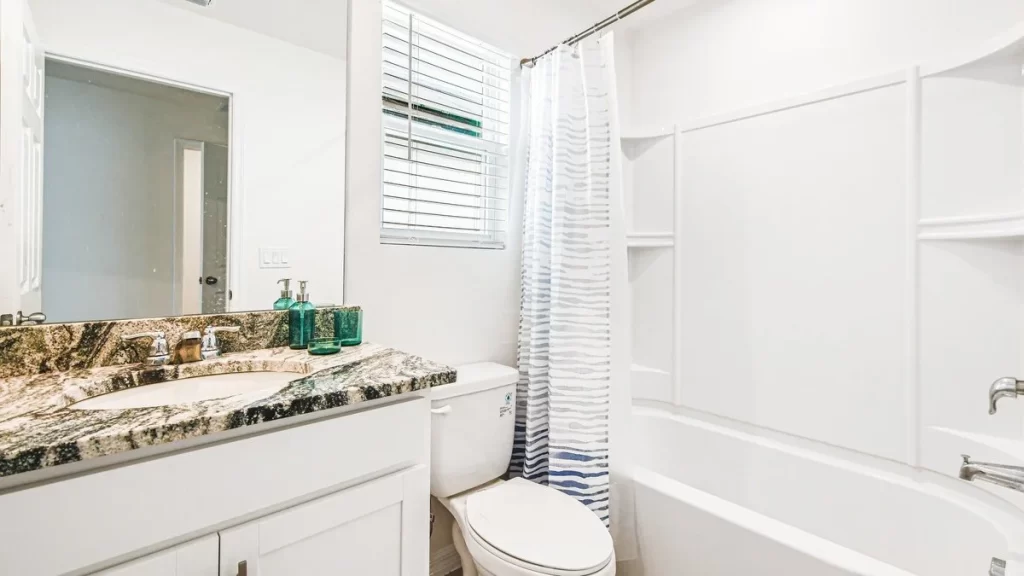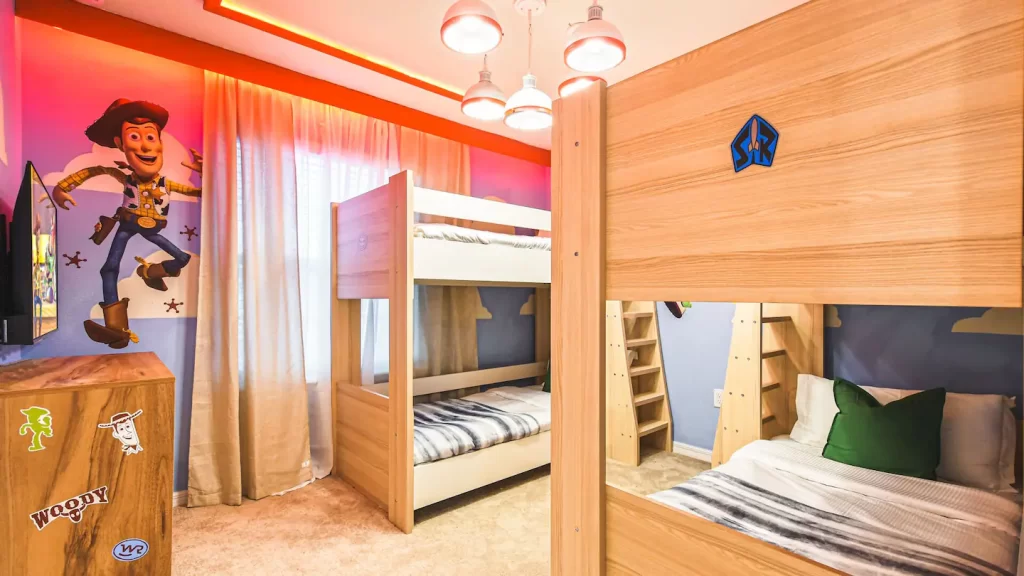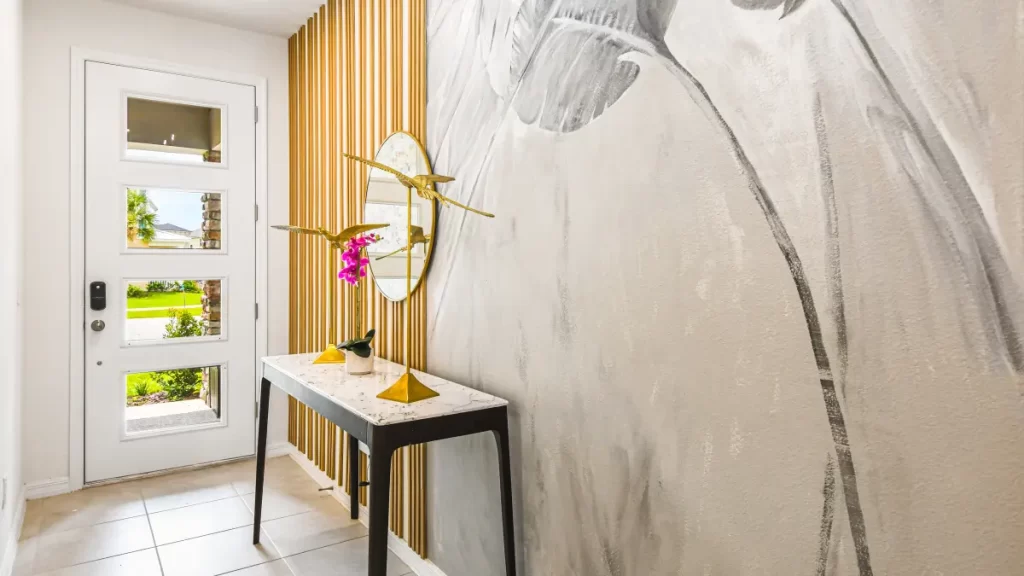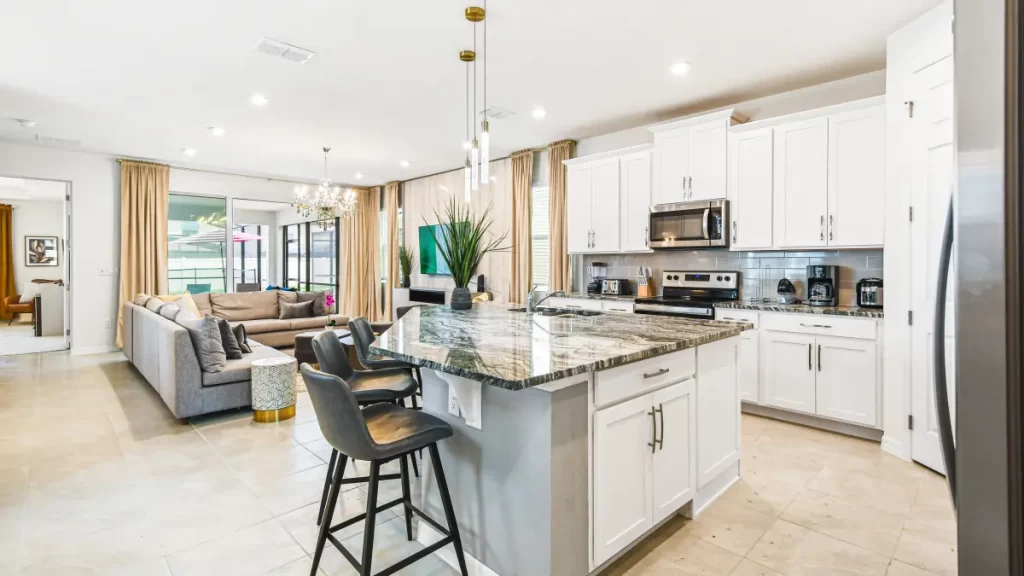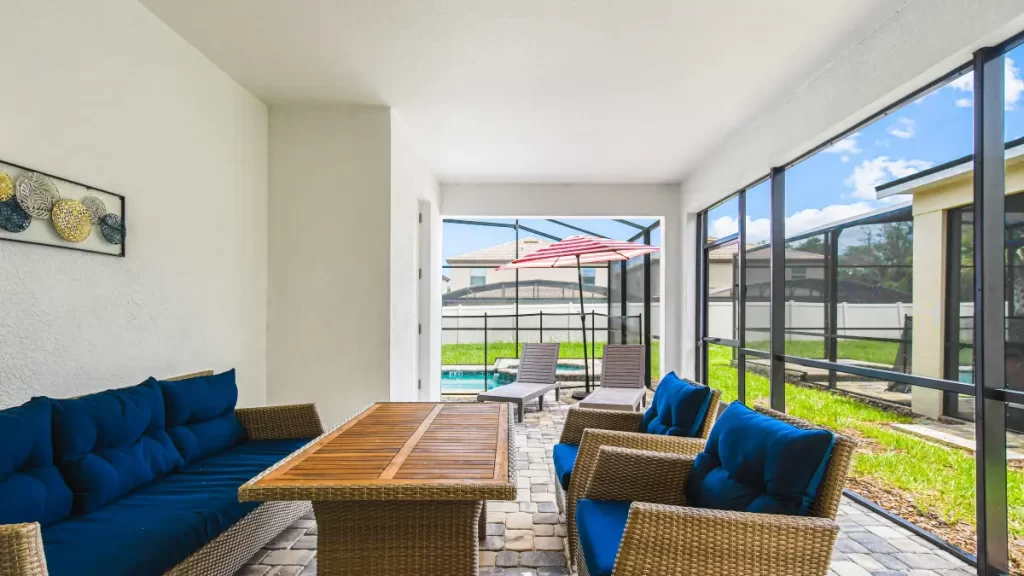Creating a serene vacation home that offers an escape from the daily grind is not just about aesthetic appeal—it involves understanding both practical necessities and the emotional needs of those who will enjoy the space.
At Veranda, we specialize in turning residential spaces into personalized sanctuaries that embody luxury and comfort. Our approach to vacation home interior design is centered around three pivotal rules that ensure every project results in a stunning, functional, and unforgettable environment.
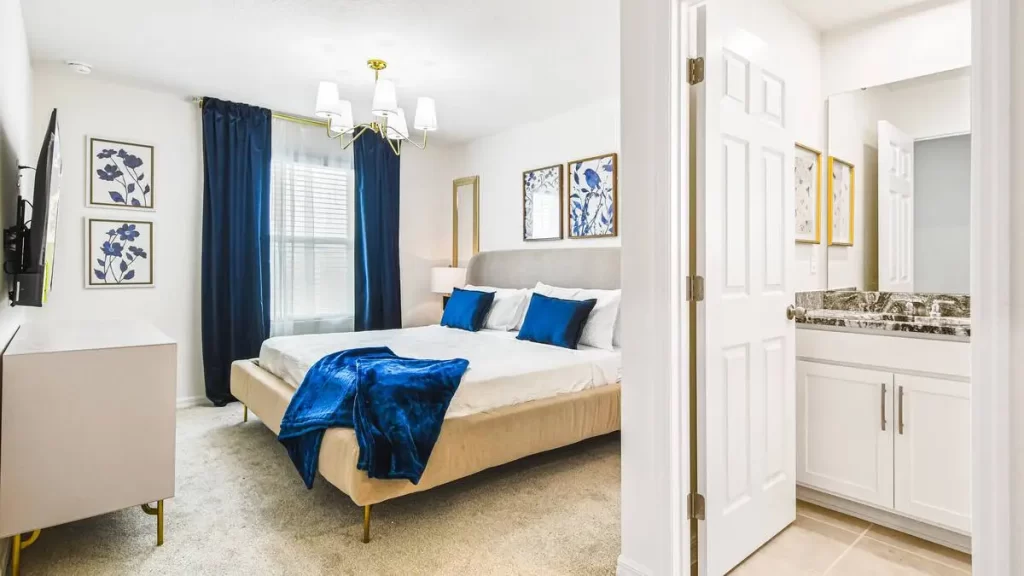
-
Embrace versatility in function and style in your vacation home
A vacation home serves multiple purposes—it’s a place for relaxation, entertainment, and sometimes remote work. The key to successful interior design in such spaces lies in versatility. This means selecting furniture and layouts that can adapt to various uses.
For example, a dining area might also function as a workspace, and living areas should be comfortable enough for both social gatherings and quiet reflection.
Integrating flexibility into a vacation home’s design also means accommodating diverse tastes and functions within a cohesive style.
-
Prioritize comfort and ease of maintenance
Comfort is paramount in a vacation home. This isn’t just about plush furnishings and cozy corners but also about creating an environment that’s easy to maintain.
Vacation homes are often seasonal retreats, meaning they should not demand extensive upkeep. Selecting durable materials and finishes that can withstand varied climate conditions and usage levels is crucial.
For instance, high-quality synthetic fabrics for outdoor furniture or washable paint finishes for interiors offer longevity and ease of cleaning.
Our commitment to quality at Veranda ensures that every element is selected with both luxury and practicality in mind.
-
Create emotional connections through personalization
A vacation home should be a reflection of its owners’ personalities and the memories they wish to create. This personal touch transforms a mere building into a beloved retreat.
Personalization can be manifested in various ways, from custom artwork that tells a family’s story to unique color schemes that reflect their preferences.
It’s about creating an environment that not only looks beautiful but also feels deeply connected to the people who inhabit it.
Harnessing the power of design trends
Embrace nature-inspired elements
Integrating natural materials and elements can significantly enhance the tranquility and aesthetic of a vacation home.
Wood, stone, and natural fibers not only offer durability and ease of maintenance but also help in creating a seamless connection with the outdoors.
This trend towards nature is not merely about using natural materials but also about incorporating green spaces, indoor plants, and panoramic windows that allow ample natural light and scenic views.
Smart home technologies
Incorporating smart home technology is increasingly becoming a standard in vacation homes. Automated systems for climate control, security, lighting, and entertainment can significantly enhance comfort and convenience.
Smart technologies not only cater to the functional aspect of vacation living but also add a layer of security that homeowners value, especially in homes they frequent seasonally.
Tackling common challenges
Practical issues
One common challenge in vacation home design is space optimization. Homes must be able to host gatherings without feeling cramped but also feel cozy when it’s just the immediate family. Solutions such as multifunctional furniture and carefully thought-out floor plans are vital.
Emotional hurdles
Another aspect is the emotional expectation attached to a vacation home. It’s often seen as a haven from stress, and failing to achieve this can be disappointing.
To combat this, we focus on serene layouts and calming palettes that help reduce stress and enhance the overall mood of the space.
The emotional value of good design
A well-designed vacation home does more than just visually please. It acts as a sanctuary for mental and physical well-being.
Spaces that promote relaxation, such as spa-like bathrooms or meditation nooks, contribute significantly to the restorative experience a vacation home is supposed to provide.
The strategic use of soothing colors, comfortable furniture, and personal elements can help reduce stress and promote a sense of well-being.
Building lasting memories
The ultimate success of a vacation home’s design is measured by the memories it helps create. Spaces designed for activities—be it a family game room, an outdoor fire pit, or a cozy reading corner—encourage shared experiences and bonding.
The design of a vacation home should facilitate these experiences, making every stay memorable and cherished.
These additions will not only lengthen your blog post but also enrich it with current trends and deeper insights into the emotional impacts of interior design, making it more engaging and informative for your readers.
At Veranda, each vacation home we design is a testament to our expertise, creativity, and understanding of what makes a space truly special.
From the initial consultation to the final touches, we ensure that every project is handled with the utmost professionalism and dedication to creating not just homes, but experiences.
Whether you’re envisioning a chic beachfront cottage or a rustic mountain hideaway, we invite you to browse our portfolio and schedule a consultation.
Your dream vacation home—a blend of beauty, functionality, and personal significance—is just a step away. Let us help you create a place where every visit is memorable, and every corner speaks to your heart.

